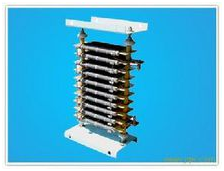What Are the Effects of Different Power Resistors?
Resistors are generally called resistance directly in daily life. It is a current limiting component. The resistance value of the resistor is fixed after it is connected in the circuit with generally two pins, which can limit the size of the current through the branch it connects to. Resistance that cannot be changed are called fixed resistors, while variable resistance is called potentiometer or variable resistor. The ideal resistor is linear, that is, the instantaneous current through the resistor is proportional to the applied instantaneous voltage. Variable resistor for voltage division, on the exposed resistor body, one to two removable metal contacts are pressed. The contact position determines the resistance between either end of the resistor body and the contact.
The terminal voltage and current have a deterministic functional relationship, which represents the two-terminal device capable of converting electrical energy into other forms. It is represented by the letter R and the unit is ohm Ω. Actual devices such as light bulbs, heating wires, resistors, etc. can be represented as resistor elements.
The product data from business of Eddy Current Displacement Transducers shows that the resistance value of a resistive element is generally related to temperature, material, length, and cross-sectional area. The physical value that measures the magnitude of resistance affected by temperature is the temperature coefficient, which is defined as the percentage change in resistance value for temperature increases by 1°C. The main physical characteristic of a resistor is to turn electrical energy to thermal energy. It can also be said to be an energy-consuming element, when electric current goes through which the internal energy is generated. Resistors usually function as voltage dividers and shunts in circuits. For signals, both AC and DC signals can pass through resistors.

Low-power resistors are usually made of carbon membranes encapsulated in plastic housings, while high-power resistors are usually wire wound resistors made by winding high-resistivity metal wires around a ceramic core. If a resistor has a resistance value close to zero ohms (for example, a large-section wire between two points), the resistor has no hindrance to the current, and the parallel circuit of such a resistor is short-circuited and the current is infinite. If a resistor has an infinite or large resistance, the circuit in series with this resistor can be considered as an open circuit and the current is zero.
Resistors commonly used in the industry are between two extremes. They have a certain resistance and can pass a certain current, but the current is not as large as when they are short-circuited. The current limiting effect of the resistor is similar to the effect of limiting the flow of water through a small diameter tube connected between two large diameter tubes.
This article is from Allicdata Electronics Limited. Reprinted need to indicate the source.

